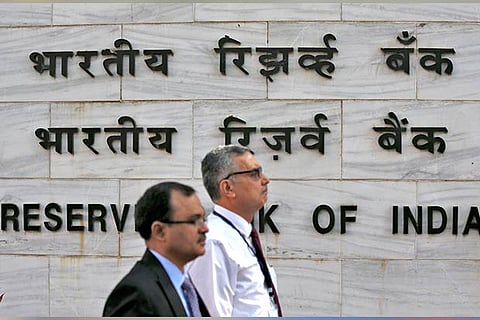

Mumbai
“It has been decided to allow eligible ECB borrowers who are into manufacturing sector to raise ECB up to $50 million or its equivalent with a minimum average maturity period of 1 year,” the RBI said in a notification. Till date, ECB up to $50 million or its equivalent could be raised by eligible borrowers with minimum average maturity period of three years. The decision to revise the minimum average maturity period of three years to one year was part of the five measures announced by the government last week after Prime Minister Narendra Modi held an economic review meeting.
Presently, Indian banks can act as arranger and underwriter for rupee denominated bonds (RDBs), also called masala bonds, issued overseas, and their holding cannot be more than five per cent of the issue size after six months of issue as an underwriter.
“It has now been decided to permit Indian banks to participate as arrangers/underwriters/market makers/traders in RDBs issued overseas subject to applicable prudential norms,” the central bank said.
Last Monday, the government exempted tax on interest payable by Indian companies to non-residents, including foreign companies, on borrowings through off-shore rupee denominated bonds issued till March 31, 2019.
Till now, interest payable on such bonds issued before July 1, 2020 was liable for concessional rate of tax of five per cent. These steps, which are aimed at raising the foreign exchange inflow, are part of the multi-pronged strategy to curb current account deficit (CAD) and rupee depreciation.
Last Friday, after the Prime Minister held the economic review meet, Finance Minister Arun Jaitley announced the government’s five measures and also a broad policy decision to curb non-essential imports and increase exports.
Rupee fall temporary, long-term path stable: Top official
As the rupee keeps falling to new lows, a top government official on Wednesday said it was a temporary phenomenon and the long-term path for rupee-dollar exchange rate was “quite stable”.
He also said the government will soon come out with the list of non-essential imports, which the government had earlier announced would be limited to check rising current account deficit.
“The ten per cent depreciation in last few weeks might have actually shot down our economy a bit. But that’s temporary,” Economic Affairs Secretary Subhash Chandra Garg said at an event here.
“Everybody understands and agrees that that’s a temporary (phase). With such high growth and inflation differential, the long-term path for rupee versus dollar is quite stable,” he said. Garg was speaking during an economic conclave on “Rural India: Road to $5 trillion economy” organised by the PHD Chamber of Commerce.
He said it was an achievable goal for India to become a five trillion-dollar economy by 2025 despite the short-term depreciation in rupee.
“There is always an implication of the dollar-rupee exchange rate. What you measure as five trillion dollars is in dollar terms. So, when we appreciate, we become a larger dollar economy and when we depreciate, we become a relatively smaller dollar economy,” he said.
India considers raising import duty on steel to support rupee
The steel ministry has proposed increasing the effective import duty on some steel products to 15 percent from current rates ranging from 5 percent to 12.5 percent, according to two sources and a government document, as the country looks to support the rupee. The proposal is a part of a broader government plan to cut “non-necessary” imports to stop an outflow of dollars that has sent the rupee to record lows.
Visit news.dtnext.in to explore our interactive epaper!
Download the DT Next app for more exciting features!
Click here for iOS
Click here for Android